Research field
- superconductor
- nitride metal
- thin film crystal growth by molecular beam epitaxy
- quantum transport phenomena
- topological material
Method
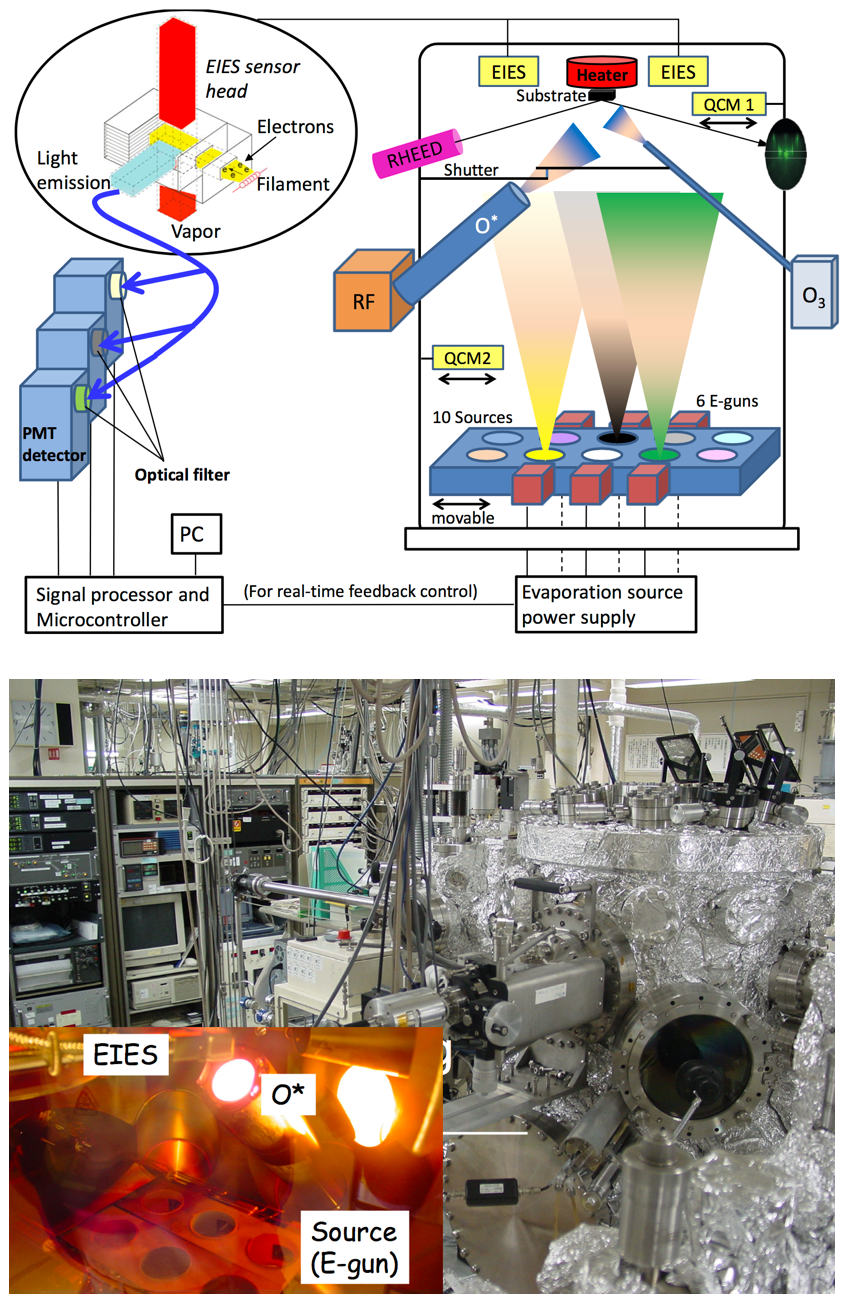
Molecular Beam Epitaxy (MBE) and Electron Impact Emission Spectroscopy (EIES)
Our MBE system has an ultra-high vacuum chamber (~10^-10 Torr) equipped with E-gun sources. EIES sensor can monitor the atomic flux live, which is used for precise control of the flux.
Previous Researches
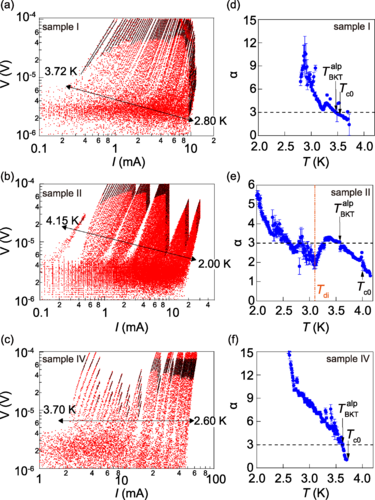
BKT transition in rhenium nitride films
The BKT transition is a phase transition phenomenon specific to two-dimensional systems and is important for using superconductors as electronic devices in thin-film form. While long-range order due to superconductivity can only exist in three-dimensional systems, zero resistance can also be achieved in two-dimensional systems through quasi-long-range order resulting from the BKT transition. On the other hand, in experimental research, distinguishing the BKT transition from superconducting transition in superconducting thin films is challenging, and it is necessary to deliberately disrupt superconducting coherence. Rhenium nitride is a material that tends to have mixed crystal phases other than the superconducting phase due to its weak ionic bonding between rhenium and nitrogen. By utilizing this characteristic, we succsessfully observed the BKT transition in rhenium nitride thin films.
K. Takiguchi, et al., Phys. Rev. B 110, 024516 (2024)
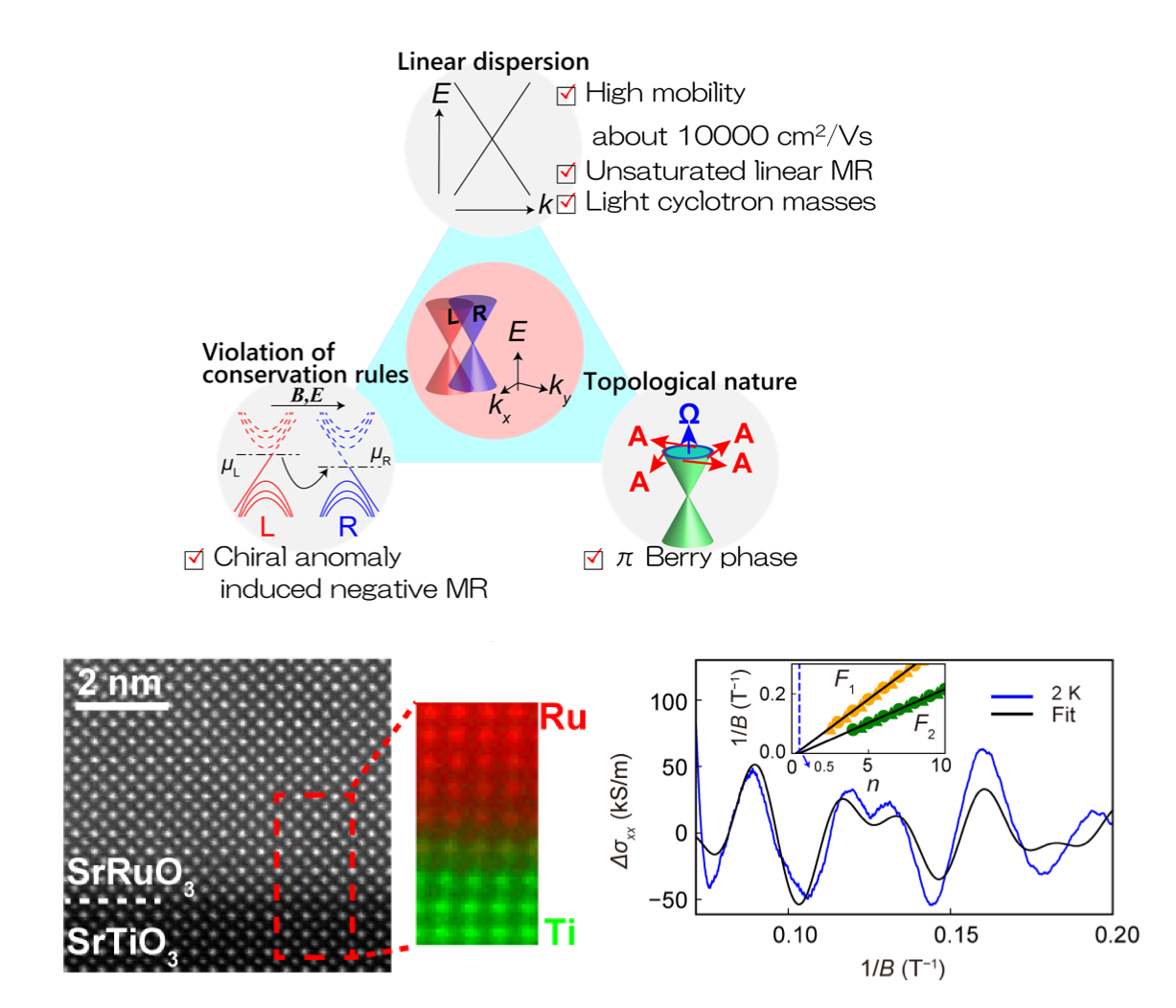
Magnetic Weyl semimetal in oxide material
Ferromagnetic perovskite oxide SrRuO3 has a long research histroy for more than half century. We grew the highest quality of SrRuO3 thin film by the machine learning assisted MBE system. Magnetotransport properties of this sample shows the clear feature of magnetic Weyl semimetal, which is the first case in oxide materials.
K. Takiguchi, Y, K. Wakabayashi, et al., Nat. Comm. 11, 4969 (2020)
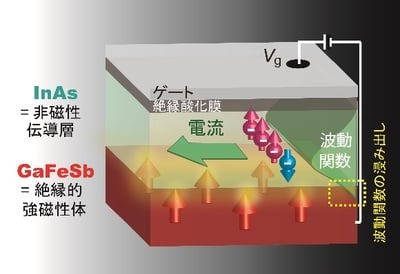
Proximity magnetoresistance in a non-magnetic/ferromagnetic semiconductor heterostructure
To introduce the magnetic coupling into a high-mobility channel is one of the most important target of spintronics. We grew the non-magnetic semiconductor InAs quantum well/ferromagnetic semiconductor GaFeSb heterostructure by molecular beam epitaxy. Since GaFeSb has larger resistivity than InAs, current flows only in InAs. Hoewver, the wavefunction in the InAs quantum well penetrates into ferromagnetic GaFeSb, and then, InAs partly magnetized, which is called magnetic proximity effect. We observed a novel magnetoresistance originated from the magnetic proximity effect, named proximity magnetoresistance.
K. Takiguchi, et al., Nat. Phys. 15, 1134 (2019)
K. Takiguchi, et al., Phys. Rev. B 105, 235202 (2022)
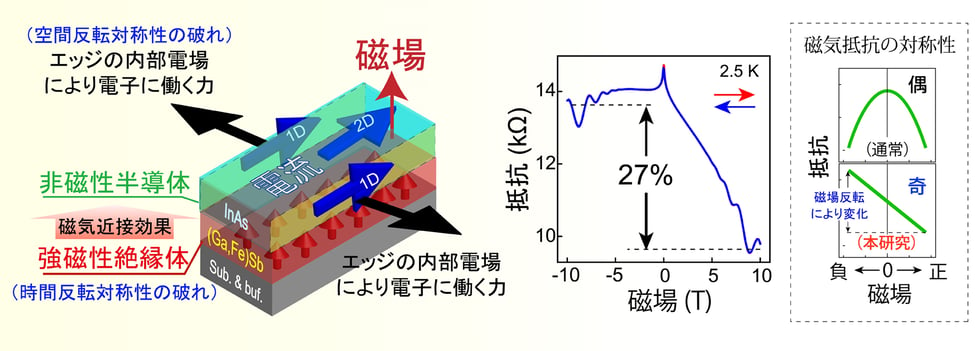
Odd-parity magnetoresistance in a non-magmetic/ferromagnetic semiconductor heterostructure
We found the largest odd-parity magnetoresistance in non-magnetic semiconductor InAs/ferromagnetic semiconductor GaFeSb. Generally electrical resistance change should be an even function against applied magnetic field. However, in the case with such a special symmtery breaking, the resistance shows even function for the magnetic field, which is called odd-parity magnetoresistance. We found that this unique behaviour is attrributed to the unique symmetry breaking in InAs/GaFeSb.
K. Takiguchi, et al., Nat. Comm. 13 6538 (2022)